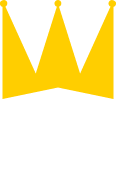



Our team has the depth of resources and experience to make your website affordable, dependable and more!
Hover over the pictures of our team to learn more about them.
As the Founder, Project Manager and "King" of Webmaster Solutions, Joe "Dr. Doctype" MacMillan is constantly striving to push web design and development into the future and demands only the best and most cutting edge design, coding and markup from his team.
Lead Developer, Gordon Clark knows his way around HTML, PHP and Javascript like the back of his hands which he sees frequently as he types out strings of code.
Lead Designer, Cameron Howe is a creative design wizard in Photoshop and Illustrator as well as coding queen in HTML, CSS and LESS!
With the help of SEO Lead, Donna Clark, you won't have to search any further for a website that is perfectly search engine optimized!
With a background in traditional marketing but a deep and constantly growing knowledge of digital and social media, our Marketing Lead, John Bosworth will put your website on the map!

To make your website effective it must have the following qualities:
We can provide you with all of this and more for an affordable price!
SEO, or Search Engine Optimazation, is crucial to your website's success. How are your clients supposed to choose your brand if they can't find your website? If they can't, they won't! With the help of SEO Lead, Donna Clark, you won't have to search any further for a website that is perfectly search engine optimized!


The WAI, or the Web Accessibility Initiative, is a set of guidelines and recommendations for web designers and developers, laid out by the W3C, or the World Wide Web Consortium, to ensure that websites are designed in a way that makes them accessible and user-friendly to all people, including people with disabilities or special needs. While the primary focus of this initiative is to aid people with disabilities, such as the blind and the deaf, it also aims to establish guidelines for other groups of people such as older people, people with low literacy or language skills, people with low bandwidth internet connections, people with older browsers or technologies and people using smartphones and tablets.
To fully and successfully conform to the standards of the WAI, a website must meet the 12 guidelines listed in the Web Content Accessibility Guide (WCAG). These guidelines are organized under four principles of accessibility. These are:
There are five requirements which must be met in order to determine whether a website conforms to the guidelines of the WCAG. These are:
A common example of how the WAI is implemented is alternative text, or “alt” text as it’s widely known, which provides a text transcription of images so that the blind and people with declining eyesight can interpret the content of images and diagrams by using a screen reader. Alt text can also help people with low bandwidth internet connections or older technologies to interpret the content of images which won’t load in their browser.
Another example of how the WAI guidelines can be used is by providing transcripts for audio clips, podcasts and videos so that audio content can be interpreted by the deaf and hard of hearing. This also helps people with low bandwidth connections or older technologies, which can’t play audio or video content.
The WAI guidelines also help to ensure that websites are designed and presented in a way that is easy to read and interpret for average internet users. One example of this is encouraging designers not to use small fonts which are hard for people with poor eyesight, poor viewing conditions or different devices to read. Other methods of using the WAI to aid with usability include recommending that designers maintain appropriate amounts of line spacing, word spacing and letter spacing and that they use text colours that contrast well against the background they are set against so that text is easy to read. Light text on a light background or dark text on a dark background would be examples of colour combinations which would make content difficult to interpret, even for people without disabilities. Certain colour combinations such as yellow text on a green background are also especially hard to read and can cause the user to strain their eyes.
The Web Accessibility Initiative is important because ensuring that the web is accessible is part of creating a fair and just society by giving people with disabilities or disadvantages equal access to the internet. The UN has even declared access to information and communication through the internet a basic human right. Furthermore, in some cases web accessibility is required by law.
While the Web Accessibility Initiative is important for social inclusion, there is also a strong case for accessibility from a strictly practical, business perspective. Similarly to other best practices when designing websites, such as responsive design, mobile design and search engine optimization (SEO), designing for accessibility simply opens up your company’s website to a wider consumer base. It also contributes to wider reach, better search results and reduced maintenance issues among other benefits.

